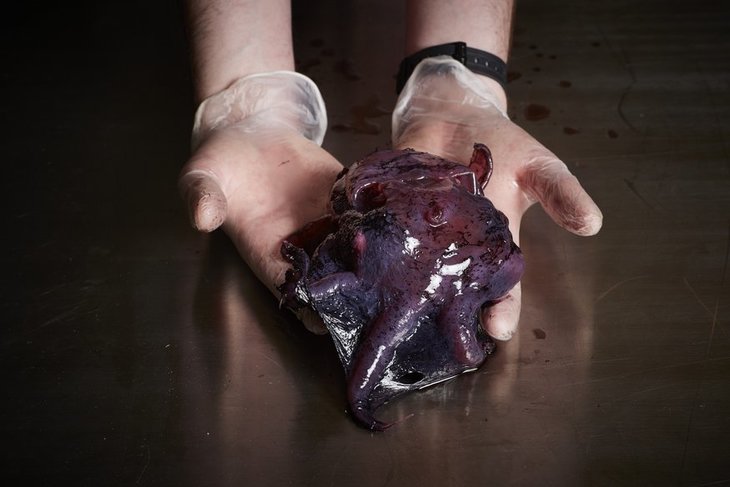Creatures Of The Night Emerge At Natural History Museum In An Illuminating Exhibition
Looks like this article is a bit old. Be aware that information may have changed since it was published.

Tiny fish dart around in front of us, but something isn't right. Then we spot it, they don't have eyes. They haven't been mutilated, but evolved this way as they live in complete darkness where eyes are unnecessary.
Stranger still is that they never sleep, unlike their eyed cousins in open water who partake in a regular sleep cycle.

This is just one of the bizarre species on show at Natural History Museum, in an exhibition looking at creatures that live in the dark, whether they be nocturnal, inhabiting caves or roaming the deep sea.

Lunar moths use their elongated wings to deflect the echolocation of their predators, while a male seadevil from the ocean depth attaches itself to a much larger female and feed off her, sometimes for life. Everyone's heard of sponging partners but the seadevil is taking it to extremes.
It's not all unfamiliar as there are stuffed foxes and a badger punters can stroke, foxes turn out to be silky smooth — a new experience for those too afraid to touch London's mangy urban foxes.

As well as learning about how these creatures feed, mate and evade predators, it's interesting to see how human environments are impacting other species. A certain heron can only feed in total darkness and so can't survive near human populations — while peregrine falcons have adapted fantastically well and the level of light in cities allows them to continue hunting after dark.
There isn't a Natural History Museum exhibition without some fantastic interactive elements, and this show doesn't disappoint. We're transfixed by the deep sea sections where LEDs blink in sequence like a shoal of bioluminescent creatures and we're transported into a bat cave where a sequence of shadows and sounds simulates bats leaving the roost — we found ourselves instinctively ducking a little.

As if the idea of bats flying overhead wasn't unsettling enough we eye ourselves up in an infra-red camera, which mimics the sight of a snake that plucks bats out of the air. Bats are pretty bad, but a snake that eats bats — time to move swiftly on.
Some of the species on show only live in caves and only specialist cave divers can investigate these habitats. A video displaying cave divers squeezing through tiny gaps shows how claustrophobic it can get, with recent events in Thailand highlighting how dangerous it can be. One fin brushing the side of the cave can kick up enough sediment to essentially leave the diver blind and it's uncomfortable watching the footage.

The Natural History Museum is spot on once again in striking a balance of being family friendly while also stuffed full of fascinating facts to keep adults riveted. While this show may not have the same wow factor as Venom and Whales, it's still an excellent exhibition that shines a light into dark worlds.
Life in the Dark is on at Natural History Museum from 13 July to 6 January. Tickets are £11.50 for adults, free for children.
All images are courtesy of the trustees of Natural History Museum.
Last Updated 12 July 2018




